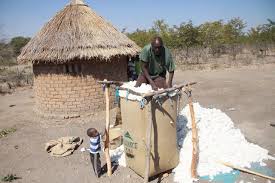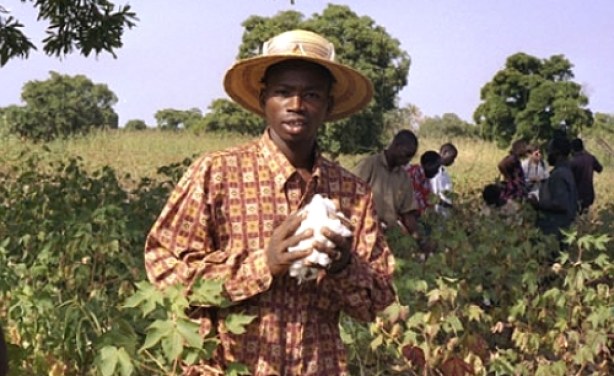COTTON farmers are unhappy over a Reserve Bank of Zimbabwe (RBZ) payment arrangement under which they are getting $40 cash per bale, with the balance being deposited in banks or mobile money wallets.
The farmers say buyers are failing to pay the $40 cash and their balance payments are being reduced by bank and mobile money transfer charges.

On average a bale of cotton is selling at $100.
The RBZ announced last month that farmers would receive $40 cash for each bale of cotton delivered to the Cotton Company of Zimbabwe (Cottco), while the balance would be deposited in their bank accounts.
The RBZ then urged farmers to open low cost bank accounts and register for mobile money to facilitate timely payment for their deliveries.
Farmers from Mt Darwin who spoke to The Financial Gazette said buyers were struggling to make the $40 cash payments.
This has given rise to a proliferation of side marketing because private buyers are taking advantage of the situation and offering the farmers cash to avoid the hassle of accessing payments through the banks.
Zimbabwe National Farmers Union vice-president, Garikai Msika, said paying cash had become a challenge for registered buyers, resulting in farmers being inconvenienced.
“The cost of retrieving the money from mobile and bank transfers has been costly to most farmers. The charges are just too exorbitant for farmers,” Msika said.
Zimbabwe Commercial Farmers Union president, Wonder Chabikwa, said while the $40 cash payment was good for the farmers considering the fact that most of them transact in cash, the mobile money and bank transfer arrangements were not ideal for them because most were based in rural areas.
Total seasonal seed cotton sales as at July 14, 2017 stood at 36,4 million kilogrammes compared to 3,7 million kilogrammes (kg) during the same period last year.
The bulk of the deliveries were from Gokwe South and Gokwe North.
Cottco has so far received the largest cotton delivery of 26,3 million kg. Other buyers that include Olam, Grafax, China Africa, Alliance Ginneries and ETG Parrogate, share the balance.
Prices are ranging from $0,47 per kg to $0,50 per kilogramme and a bale is attracting an average price of $100.
When the marketing season began on June 1, buyers were paying $0,40 per kg for the white gold.
The prices then went up to $0,48 per kg but later dropped by one cent to $0,47 per kg.
“Cottco is buying at $0,47 per kg as advance payment, a grade differential price is expected to be paid after grading. Other private buyers are paying as high as $0,50 per kilogramme,” Cotton Producers and Marketers Association of Zimbabwe representative, Skumbuzo Todhlana, said.
After grading, Grade A is expected to fetch at least $0,55 per kg.
The adjusted prices of Grade A and B seed cotton (after grading) will be paid directly into bank accounts or through mobile wallets.
“As farmers we would have wanted better prices this year but cotton prices are determined by activities on the international market,” Todhlana said.
On the international markets, the Cotlook A Index quoted a price of $0,82 per pound or $1,64 per kg.
Cotton output this year is expected to reach 100 million kg from 30 million kg last year.
To increase production, government scaled up input support for cotton farmers targeting 400 000 households. Under the Presidential Input Scheme next year, cotton will be supported to the tune of $60 million, catering for 400 000 households.
Government’s intervention comes after the liberalised contract system, whereby numerous companies compete with each other, had failed to revive production.
Over the years, the country’s white gold has not glittered that much as many farmers have been turned to beggars.
With the domestic industry absorbing only three percent of the cotton produced locally, low international prices have seriously affected production in the country.
Cotton is Zimbabwe’s second largest export crop after tobacco.
The crop is produced mainly by smallholder farmers who cultivate small plots of between one and two hectares under rain-fed conditions.
The industry reached a peak of 353 million kg in 2000.-Fingaz







1 Comment